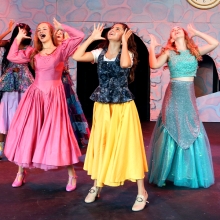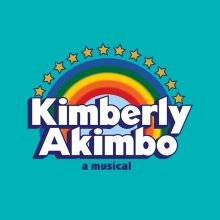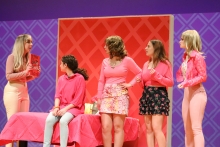Show History
History
Inspiration
In Fall 2005, L.A.-based playwright, Jos Cruz Gonzlez, was hired to work with Gilberto Zepeda (drama director at PSJA North High School) and dramaturg, Ken Cerniglia, to adapt Disney's Aladdin JR. (book by Jim Luigs, based on the 1992 film, music by Alan Menken, lyrics by Howard Ashman and Tim Rice) into a dual language piece. Spanish and English were woven into the plot with the goal of having both English-speaking and Spanish-speaking audiences follow the story easily without boring bilingual audiences.
Disney's Aladdin DLE adds a new backstory to the familiar plot of the previous versions: A long time ago, everyone in Agrabah was bilingual. When Jafar first found the Genie's magic lamp, he wished to divide Agrabah by language so that the people in the palace would speak one language and the people in the streets another (in this case, Spanish and English, respectively). Jafar would be the only one who could translate, giving him more power. After completing the wish, Jafar tossed the lamp, spilling some magic dust on his parrot, Iago. As the lamp then passed to the tiger, Raja, and the monkey, Abu, all three animals gained the power of human speech. This backstory is teased in a new prologue and revisited throughout the play.
Productions
Disney's Aladdin JR. was released in January 2005 as the inaugural Broadway Junior™ show in The Disney Collection, licensed through Music Theatre International (MTI). The Disney Collection was featured at MTI's exhibition table at the Texas Educational Theatre Association (TETA) conference in early 2005. There, Gilberto Zepeda, drama director of PSJA (Pharr - San Juan - Alamo) North High School, requested permission to perform a "dual-language" adaptation of Disney's Aladdin JR. in the school's holiday performance slot as outreach to the area's substantial Spanish-speaking population.
In January 2006, the group presented the show at the Texas Educational Theatre Association conference and then had encore performances back in Pharr. Requests for licenses have been made ever since.
After refining the script and score, a dual-language guide vocal recording was created in Nashville while recording Disney's Aladdin KIDS. A new pilot production premiered at Theatre Under the Stars in June 2009.
Cultural Influence
- PSJA North is in a largely Hispanic district near the Mexican border that, in 1996, began offering a dual-language educational track, which teaches fluency and literacy in two languages through an integrated curriculum. When the play premiered in PSJA North's annual December "family theatre" slot, the community response was overwhelming. Parents and grandparents who were never even allowed to speak Spanish in school were overcome with emotion in witnessing their native tongue not only tolerated, but celebrated on their local high school stage.
- The story of Aladdin is a Middle Eastern folk tale that has found many incarnations over the centuries. It is one of the better-known stories from the collection "The Book of One Thousand and One Nights." Disney made a popular film version of the folk tale in 1992 that is the basis for the stage versions of Disney's Aladdin DLE, Aladdin JR. and Broadway's Aladdin The Musical.
Trivia
- The dual-language device reinforces the class barriers between Aladdin and Jazmn (names of royal characters use Spanish variants). To aid understanding, the story uses Royal Translators as narrators. The animals and the Genie are also multi-lingual. There is a strong relationship between language fluency and magic.
- As much as possible, the script uses standard Latin American Spanish so that the show can play well in various Hispanic communities (without privileging, for example, Mexican or Puerto Rican colloquialisms).
- Depending on who sings them and at what point in the story, some songs are in Spanish, some in English and some are bilingual. Lyrics from the Latin American Spanish version of Aladdin (1992) have been largely maintained due to the film's popularity.
- Spanish dialogue and lyrics appear in italics in the script, followed by English translations in brackets. These back-translations often differ from the original English lines and lyrics due to the adaptation necessary in translation. At present, the production materials for the show are English-based, so all stage directions remain in English.
- Two freshmen cast members in the original PSJA production (playing Jazmn and Iago) were products of dual-language education and served as language tutors for their classmates.
- Piggybacking on a recent recording session for Disney's Aladdin KIDS, Disney Theatricals made a dual-language guide-vocal recording of Disney's Aladdin DLE, which seemed essential for producing the show in most venues. In June 2009, Houston's Theatre Under the Stars youth program, whose company included only four Spanish-speakers, used the CDs to rehearse and perform the show in their outdoor venue with great success.




